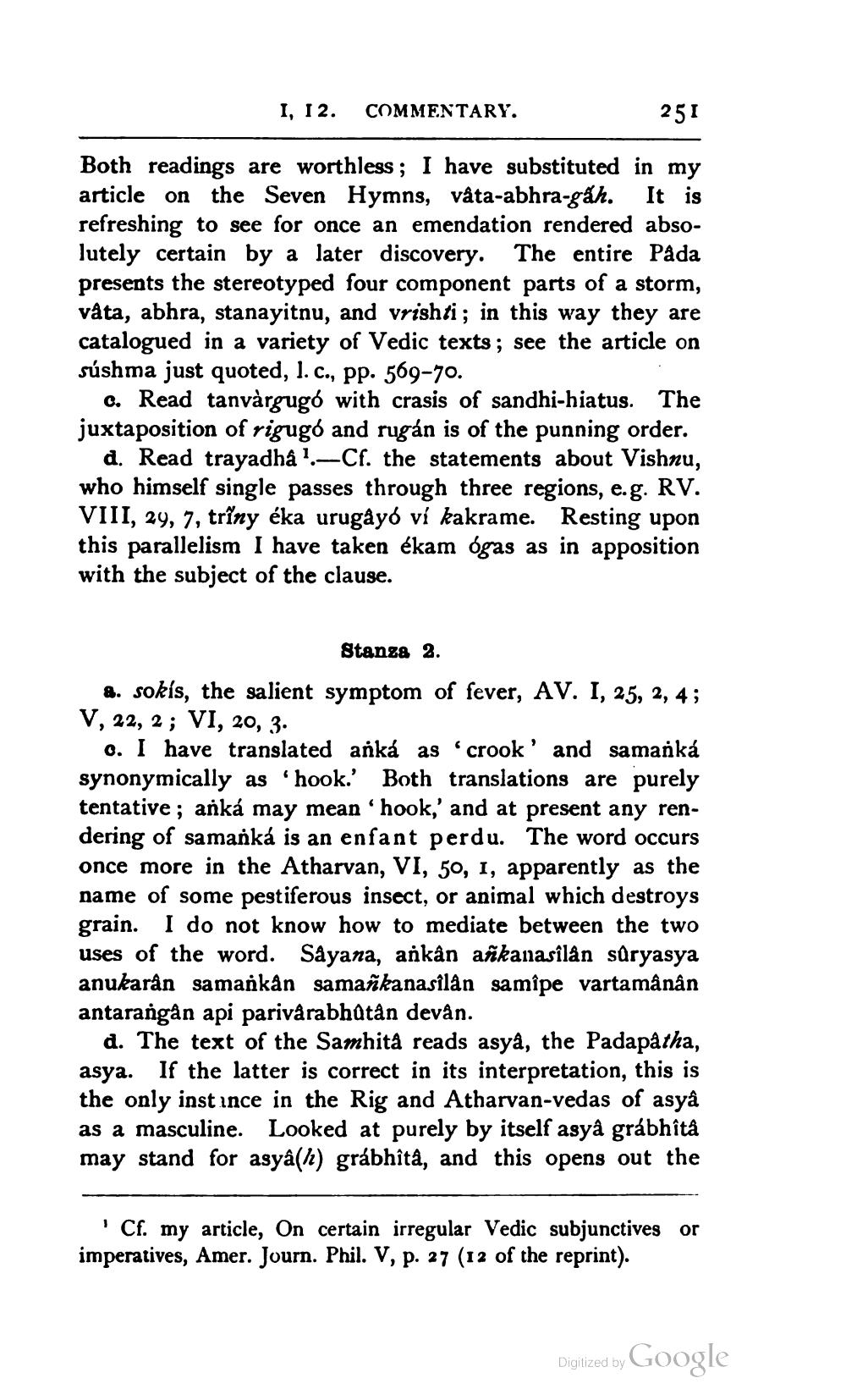________________
1, 12.
COMMENTARY.
251
Both readings are worthless; I have substituted in my article on the Seven Hymns, våta-abhra-gáh. It is refreshing to see for once an emendation rendered absolutely certain by a later discovery. The entire Pada presents the stereotyped four component parts of a storm, vata, abhra, stanayitnu, and vrishti; in this way they are catalogued in a variety of Vedic texts ; see the article on súshma just quoted, I. c., pp. 569-70.
C. Read tanvàrgugó with crasis of sandhi-hiatus. The juxtaposition of rigugo and rugán is of the punning order.
d. Read trayadha!.-Cf. the statements about Vishnu, who himself single passes through three regions, e.g. RV. VIII, 29, 7, trỉny éka urugâyó ví kakrame. Resting upon this parallelism I have taken ékam ogas as in apposition with the subject of the clause.
Stanza 2. a. sokís, the salient symptom of fever, AV. I, 25, 2, 4; V, 22, 2 ; VI, 20, 3.
o. I have translated anká as crook' and samanká synonymically as 'hook.' Both translations are purely tentative ; anká may mean 'hook,' and at present any rendering of samanká is an enfant perdu. The word occurs once more in the Atharvan, VI, 50, 1, apparently as the name of some pestiferous insect, or animal which destroys grain. I do not know how to mediate between the two uses of the word. Såyana, arkân ankanasîlån sûryasya anukaran samankan samañkanasilan samîpe vartamânân antarangan api parivärabhatån devân.
d. The text of the Samhità reads asyà, the Padapatha, asya. If the latter is correct in its interpretation, this is the only instince in the Rig and Atharvan-vedas of asya as a masculine. Looked at purely by itself asyå grábhîtå may stand for asyâ(2) grábhità, and this opens out the
'Cf. my article, On certain irregular Vedic subjunctives or imperatives, Amer. Journ. Phil. V, p. 27 (12 of the reprint).
Digized by Google




